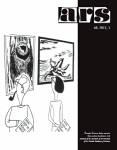
Journal ARS 48 (2015) 1
Tine GERM
A Curious Collection of Curious Deaths in Theatrum mortis humanae tripartitum by Johann Weichard Valvasor: Context, Sources, Invention
(Summary)
Theatrum mortis humanae tripartitum (1682) by the Carniolan polymath Johann Weichard Valvasor (1641–1693) can be classified under the genre of allegorical moral-didactic poetry, very popular in the Baroque age. It is composed of three chapters, mutually associated by the idea of transience and the inevitability of death: the first part, entitled Saltus mortis, is followed by the Varia genera mortis, featuring images of death of famous and less famous people from antiquity to Valvasor’s own time, and the Poenae damnatorum, where infernal torments of the damned are depicted. The book is richly illustrated with copperplate engravings executed by Andreas Trost. The chapter Varia genera mortis, where 35 death cases are presented in short epigrams by Valvasor and illustrated with engravings made after the original drawings of Slovenian draughtsman Johann Koch, has so far not been an issue of scholarly research, despite its interesting iconography. In the lack of proper iconographic analysis this part of the book was simply described as “a curious collection of curious deaths.” The article focuses on the iconography of the Varia genera mortis, its artistic context and its genesis. For the first time the direct literary sources of author’s inspiration are identified and his relation to the tradition of the Renaissance and Baroque genre of picturesque death stories established. The analysis of verses and engravings reveals specific criteria that Valvasor applied in the conception of this chapter, the characteristics of the dealing with the theme, and his original contribution to the iconography of Death in the early modern period, both in the fields of literature and visual arts.